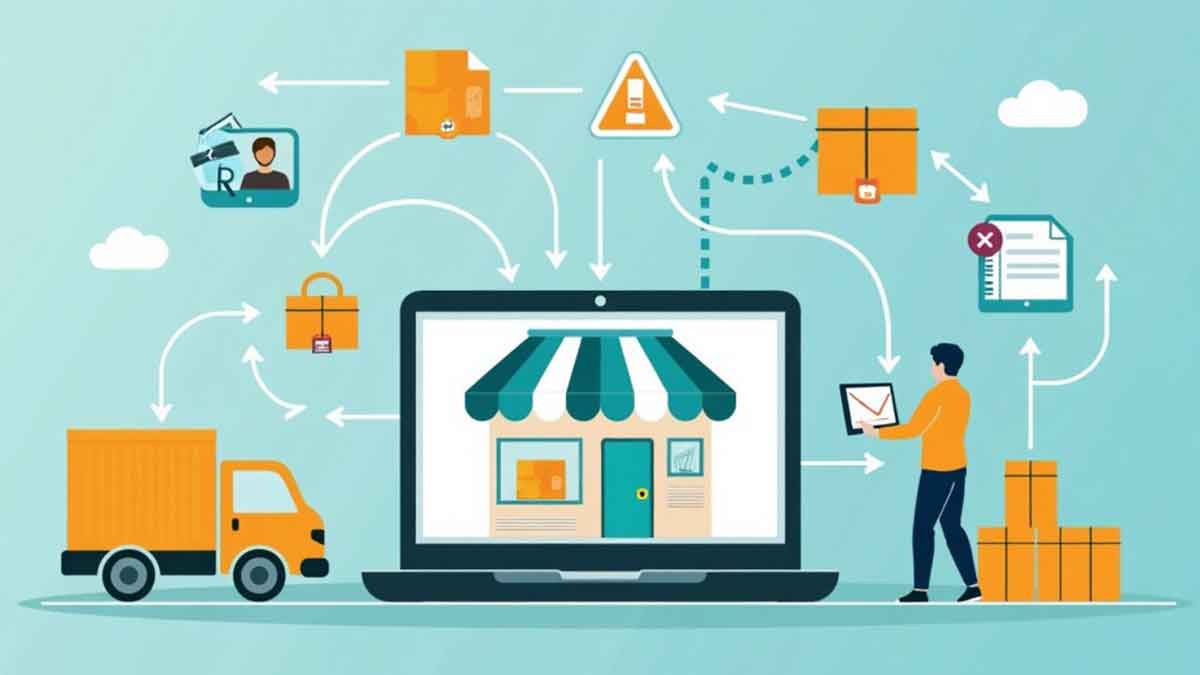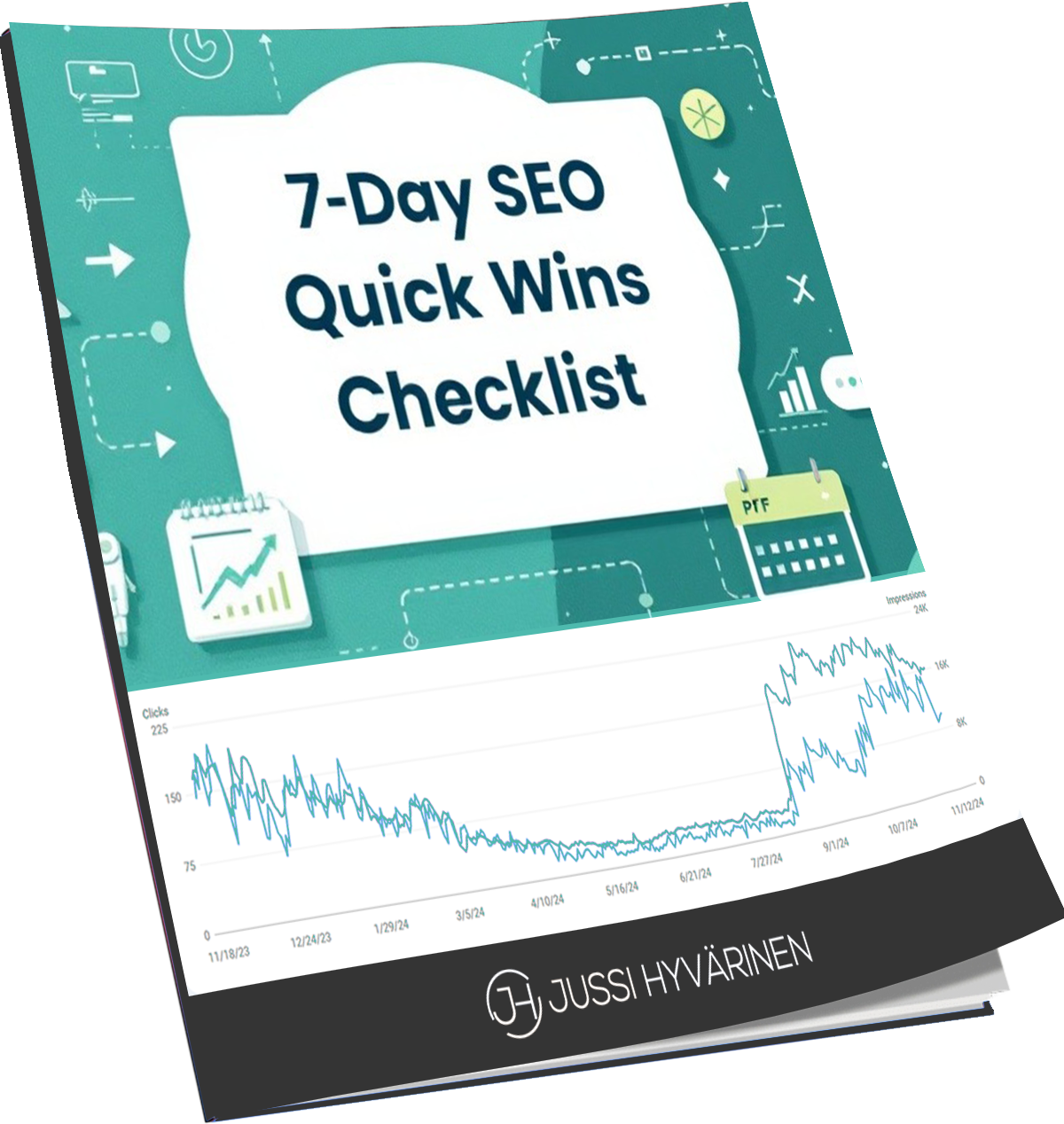Imagine running a thriving Amazon business without ever touching a single product or worrying about storage costs. Inventory-free selling on Amazon is indeed possible!
In this article, we'll explore five innovative methods to sell on Amazon without inventory, from setup to emerging trends.
Why Sell on Amazon Without Inventory?

Before we dive into the specifics, let's address why you might want to sell on Amazon without inventory:
- No need to invest thousands in stock before making your first sale.
- You're not stuck with unsold inventory if a product performs poorly.
- Quickly test new products and pivot your business strategy.
- Grow your business without worrying about warehouse space.
- Spend more time and resources on promoting your products.
Now, let's explore the five selling methods on Amazon without inventory.
1. Dropshipping
Dropshipping is perhaps the most well-known method of selling without inventory. Here's how it works:
- You list products on Amazon.
- When a customer places an order, you purchase the item from your supplier.
- The supplier ships the product directly to your customer.
Setting Up a Dropshipping Business on Amazon
- Step 1: Research and choose your niche
- Step 2: Find reliable suppliers
- Step 3: Create your Amazon seller account
- Step 4: List your products
- Step 5: Optimize your listings for Amazon SEO
- Step 6: Manage orders and customer service
💡Pro Tip: Use Amazon's Brand Registry to protect your brand and access additional marketing tools, even if you're dropshipping.
Advantages of Dropshipping
- Low startup costs
- Wide product selection
- Easy to scale
Challenges of Dropshipping
- Lower profit margins
- Reliance on suppliers
- Intense competition
2. Print-on-Demand (POD)
Print-on-demand is a fantastic option for creative entrepreneurs. Here's the lowdown:
- You create designs for products like t-shirts, mugs, or phone cases.
- You list these products on Amazon using a POD service.
- When an order comes in, the POD service prints and ships the product.
Setting Up a Print-on-Demand Business on Amazon
- Step 1: Choose a POD platform (e.g., Merch by Amazon, Printful, Printify)
- Step 2: Create your designs (or hire a designer)
- Step 3: Upload designs and set prices
- Step 4: Market your products
Advantages of POD
- Perfect for creative types
- No inventory management
- Customization options
Challenges of POD
- Design quality is crucial
- Limited to specific product types
- Potential for intellectual property issues
3. Amazon FBA with Just-In-Time Inventory

While not entirely inventory-free, this method minimizes your inventory holding:
- You source products in small quantities.
- Ship them to Amazon's fulfillment centers.
- Amazon handles storage, packing, and shipping.
- Reorder based on sales velocity.
Setting Up FBA (Fullfilment By Amazon) with Just-In-Time Inventory
- Step 1: Research products with high turnover rates
- Step 2: Find suppliers willing to work with small order quantities
- Step 3: Create your Amazon FBA account
- Step 4: Send initial inventory to Amazon
- Step 5: Monitor sales and reorder frequently
Advantages of FBA with Just-In-Time Inventory
- Amazon Prime eligibility
- Balanced approach to inventory management
- Potential for higher profit margins than dropshipping
Challenges of FBA with Just-In-Time Inventory
- Some upfront inventory cost
- Requires careful inventory forecasting
- FBA fees can eat into profits
4. Amazon Kindle Direct Publishing (KDP)

If you're a writer or content creator, Amazon KDP offers an excellent opportunity to sell without inventory. Here's how it works:
- You create digital content (e-books, audiobooks, or print-on-demand paperbacks).
- Upload your content to the KDP platform.
- Set your price and publish.
- Amazon handles the delivery of e-books or printing and shipping of physical books.
Setting Up a KDP Business
- Step 1: Write your book or create your content
- Step 2: Format your book for Kindle and/or print
- Step 3: Design a cover (or use Amazon's Cover Creator)
- Step 4: Set up your KDP account
- Step 5: Upload your book and set pricing
- Step 6: Publish and market your book
Advantages of KDP
- Complete creative control
- Higher royalty rates compared to traditional publishing
- Access to Amazon's vast customer base
- Option for print-on-demand physical books
Challenges of KDP
- Requires writing skills or content creation abilities
- Success is heavily dependent on marketing efforts
- Competitive marketplace
5. Amazon Associates Program
While not strictly "selling" on Amazon, the Associates Program allows you to earn money by promoting Amazon products without holding any inventory. Here's how it works:
- You sign up for the Amazon Associates program.
- Choose products to promote on your website, blog, or social media.
- Use special affiliate links when promoting products.
- Earn a commission when someone buys a product through your link.
Setting Up an Amazon Associates Business
- Step 1: Create a website or blog (if you don't already have one)
- Step 2: Sign up for the Amazon Associates program
- Step 3: Choose relevant products to promote
- Step 4: Create content featuring these products (reviews, comparisons, etc.)
- Step 5: Incorporate your affiliate links
- Step 6: Drive traffic to your content
Advantages of Amazon Associates
- No inventory or customer service to manage
- Potential to earn from a wide range of products
- It can be combined with other content creation efforts
Challenges of Amazon Associates
- Requires significant traffic to your site for meaningful income
- Need to constantly create new content
- Commission rates can be relatively low for some categories
Comparing Inventory-Free Selling Methods

Let's break down the pros and cons of each method:
Dropshipping
- Startup Costs: Low
- Profit Margins: Low to Medium
- Product Variety: High
- Scalability: High
- Required Skills: Supplier management, customer service
Print-on-Demand
- Startup Costs: Low
- Profit Margins: Medium to High
- Product Variety: Medium
- Scalability: High
- Required Skills: Design, marketing
FBA with Just-In-Time Inventory
- Startup Costs: Medium
- Profit Margins: Medium to High
- Product Variety: Medium
- Scalability: Medium
- Required Skills: Inventory management, forecasting
Kindle Direct Publishing (KDP)
- Startup Costs: Low
- Profit Margins: High
- Product Variety: Low (limited to books and content)
- Scalability: Medium
- Required Skills: Writing, content creation
Amazon Associates
- Startup Costs: Low
- Profit Margins: Low to Medium
- Product Variety: High
- Scalability: High
- Required Skills: Content creation, marketing
Emerging Trends in Inventory-Free Selling on Amazon
1. AI-Powered Inventory Management
AI tools can predict product demand, automate reordering, and optimize pricing in real-time, benefiting dropshippers and FBA sellers using just-in-time inventory.
2. Virtual Bundling
Amazon now allows sellers to create virtual bundles of complementary products without physically packaging them together, opening up new opportunities for inventory-free sellers.
3. Sustainable and Ethical Sourcing
With growing consumer awareness, there's a trend towards sustainable and ethically sourced products. Inventory-free sellers can capitalize on this by partnering with eco-friendly suppliers or focusing on sustainable POD options.
4. Interactive Content for KDP and Associates
For KDP authors and Amazon Associates, there's a growing trend towards interactive content, such as enhanced e-books or interactive product guides, to increase engagement and sales.
5. Voice Search Optimization
With the rise of smart speakers and voice assistants, optimizing content for voice search is becoming crucial across all inventory-free selling methods.
Advanced SEO Techniques for Inventory-Free Amazon Sellers
1. Leverage Long-Tail Keywords
Focus on specific, less competitive long-tail keywords across all methods.
2. Optimize for Voice Search
Include natural language queries in your product listings, book descriptions, or affiliate content.
3. Use Amazon's Editorial Recommendations
While you can't directly control these, focus on product quality and customer satisfaction to increase your chances of being featured.
4. Implement Negative Targeting in PPC Campaigns
Exclude irrelevant search terms to improve your ad relevance and reduce wasted ad spend.
5. Utilize Amazon Posts
If you're brand registered, use Amazon Posts to showcase your products in a social media-style format.
Legal and Compliance Considerations

Amazon Seller Assistant
Try my Amazon Seller Assistant GPT. It is an expert in Amazon selling, providing precise guidance on various Amazon-related issues.
1. Trademark Compliance
Ensure you have the right to sell or promote branded products.
2. Product Safety Regulations
Even if you're not handling products directly, ensure they meet safety standards.
3. Tax Obligations
Understand your tax responsibilities, which can vary depending on your business model and location.
4. Amazon's Policies
Familiarize yourself with Amazon's policies on dropshipping, KDP, and the Associates program to avoid account suspension.
5. Intellectual Property Rights
For KDP authors and POD sellers, ensure you have the necessary rights to publish or use any content or designs.
Financial Planning for Inventory-Free Sellers
1. Cash Flow Management
Create a cash flow forecast that accounts for the timing of Amazon payouts and any necessary expenses.
2. Pricing Strategy
Develop a dynamic pricing strategy considering all costs, including Amazon fees, shipping, and potential returns.
3. Reinvestment Planning
Decide how much of your profits to reinvest in marketing, tools, or expanding your product line.
4. Emergency Fund
Set aside funds for unexpected expenses or to cover costs during slow periods.
Leveraging Amazon's Latest Features
1. Amazon Live
Use this live-streaming feature to showcase your products or books without needing physical inventory on hand.
2. Amazon Stores
Create a multi-page store to showcase your brand and products, even if you're dropshipping or an affiliate.
3. Amazon Attribution
Track the performance of your off-Amazon marketing efforts, helping you optimize your overall marketing strategy.
4. Kindle Unlimited
For KDP authors, utilize Kindle Unlimited to reach more readers and earn from page reads.
5. Kindle Vella
Experiment with Kindle Vella for serialized storytelling, opening up new revenue streams for writers.
6. OneLink
For Amazon Associates, use the OneLink feature to monetize international traffic.
7. Amazon Influencer Program
Create your own Amazon storefront as an extension of your Associates business.
Common Misconceptions About Selling Without Inventory
Myth 1: "It's completely passive income."
Reality: While it requires less hands-on work than traditional retail, you still need to actively manage your business, handle customer service, and optimize your listings or content.
Myth 2: "You can't build a brand without inventory."
Reality: With careful supplier selection, consistent customer service, or strong content creation, you can build a strong brand even without holding inventory.
Myth 3: "It's impossible to ensure product quality."
Reality: You can maintain high standards across all inventory-free methods by thoroughly vetting suppliers, implementing quality control measures, or creating high-quality content.
FAQs
Can I use multiple inventory-free methods simultaneously?
Absolutely! Many successful sellers use a combination of methods to diversify their offerings and income streams.
How do I handle returns with dropshipping?
You'll need to coordinate with your supplier. Some may offer direct returns, while others might require you to handle the return process.
Is it possible to transition from an inventory-free model to holding inventory?
Yes, many sellers start with inventory-free methods and gradually transition to holding inventory as they grow and identify their best-selling products.
Can I use KDP to publish books in languages other than English?
Yes, KDP supports publishing in many languages, allowing you to reach a global audience.
Is it possible to combine the Amazon Associates program with other inventory-free methods?
Absolutely! Many sellers use the Associates program to complement their other Amazon businesses. For example, a KDP author might use affiliate links to promote related products in their niche.
Conclusion
Selling on Amazon without inventory offers a unique opportunity to start an e-commerce business with minimal upfront investment.
Using dropshipping, print-on-demand, FBA with just-in-time inventory, Kindle Direct Publishing, and the Amazon Associates program, you can build a successful Amazon business without the traditional burdens of inventory management.
Remember, success in these models requires careful planning, excellent customer service, and a deep understanding of Amazon's platform.
Stay informed about emerging trends, leverage advanced SEO techniques, and always prioritize compliance and financial planning.
Are you ready to start your inventory-free Amazon journey? With the strategies and insights provided in this guide, you're well-equipped to navigate the exciting world of selling on Amazon without inventory.
Happy selling!


